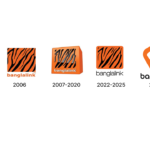Table of Contents
ToggleIn 2025, the competition for local search results is more intense than ever. With more consumers relying on search engines to find local businesses, the importance of local SEO has grown exponentially.
If your business isn’t appearing on the first page of local search, you’re likely invisible to your ideal customers. That’s why this complete guide to local SEO is to help you understand, apply strategies that truly work.
What Is Local SEO and How Does Local SEO Work?

Local SEO or local search engine optimization, is the process of optimizing your online presence to attract more business from relevant local searches. This improves,
- Visibility in Google’s Local Pack,
- Optimizing your Google Business Profile,
- Getting local citations,
- Targeting relevant local keywords and
- Ensuring your website structure supports local intent.
When people search for local services like “best marketing agency near me”.
Google prioritizes businesses that are optimized for local business. Local SEO helps your brand show up there, connecting you directly with customers in your geographic area.
Why Local SEO Is Crucial for Small Businesses?
Whether you’re running a bakery, law firm, auto shop or freelance studio, local SEO is crucial to your growth. Here’s why,
- Local SEO strategies directly increase your chances of appearing in the local pack
- You attract people who are actively looking to find local services now
- It’s often more cost-effective than traditional ads or broad national SEO
- It helps build local visibility and trust in your community
Small businesses grow only based on connection. By targeting your local audience using the right seo practices, you’re increasing the right traffic that will help you to grow your business.
The Map Pack
When someone searches for a local business or service, Google often shows a map with three business listings at the top of the results.
This is the “map pack” or “local pack.”
And ranking here is a big deal.

Common Local SEO Ranking Factors
To rank higher in local search, Google and other local search engines have a variety of ranking factors. Like,
- Relevance: How well your content matches the local search intent
- Distance: Proximity of your business to the searcher’s location
- Prominence: Authority based on reviews, backlinks and local citations
- Engagement: CTR, user interaction and behavioral data
- Consistency: Having accurate info in local directories
Improving your local search presence starts with optimizing each of these elements. For example, making sure your NAP (Name, Address, Phone Number) is listed the same in all platforms, that’s a small step with a big effect on your local SEO ranking.
The Role of Local Content and Community
To truly dominate local search, your content must focus on the pulse of your area. This means,
- Publishing blog posts about local events or updates
- Partnering with or sponsoring local organizations
- Creating landing pages for specific neighborhoods or cities
- Sharing stories from local customers
This kind of effective local SEO not only boosts your rankings but also makes your brand feel relatable and connected to the community.
Start With the Basics, Build a Foundation
If you’re just beginning your local SEO journey, here are the first steps you must take,
- Claim and optimize your Google Business Profile
- Research and target local keywords
- Submit to trusted local directories
- Get listed on local news sites and community blogs
- Encourage satisfied customers to leave local reviews
These are the core actions that help you rank higher in local searches.
What’s the Difference Between Local SEO and Standard SEO?
Local SEO focuses on optimizing for a specific geographic area, while traditional SEO aims to reach a broader, more globally diverse audience.
For example, consider the search term “marketing agency”.
This query shows marketing agency results regardless of location.
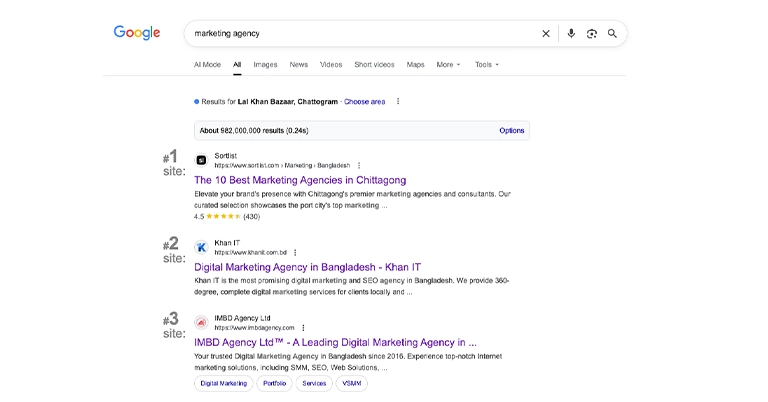
For example, consider the search term “marketing agency”.
This query shows marketing agency results regardless of location.
Now, adjust the search term to “marketing agency near me”.
The search results focus on local results, showing only businesses within the searcher’s area.
To rank for local searches like this, you need to:
- Find popular keywords among local searchers
- Optimize your Google Business Profile (GBP)
- Create consistent name, address, phone number (NAP) citations
Core Local SEO Strategies to Improve Your Local Ranking
Now you understand the importance of local SEO in 2025, it’s time to implement the strategies that will actually help you rank higher in local search results. Whether you’re a small business owner or local brand’s, these local SEO strategies will guide you.
1. Optimize Your Google Business Profile
Your Google Business Profile is your single most important asset when it comes to local SEO optimization.
If you haven’t created or optimized your Google Business Profile yet, this step-by-step guide has you covered.
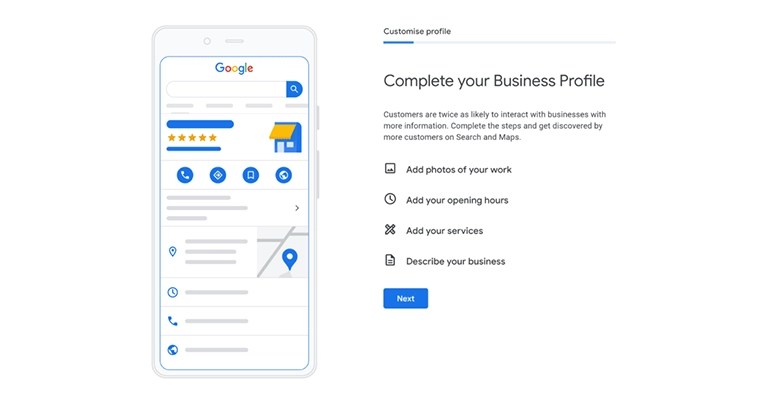
2. Generate and ask for Local Reviews
Then, generate a short URL (or QR code) to copy and send to customers.
Online local reviews are a top local SEO ranking factor. They increase trust and directly influence how your business appears in the local pack.
Here’s how to improve your review strategy,
- Ask happy customers to provide reviews on Google and top review sites.
- Include review requests in follow-up emails, receipts or in-store signs.
- Respond to every review positive or negative to show you care about feedback.
- Feature reviews on your website to boost conversions.
The more genuine, high quality reviews you collect, the better your chances to rank higher in local listings.
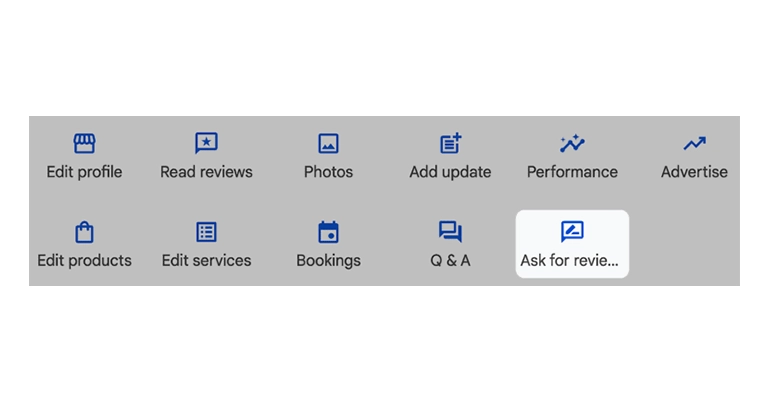
Then, generate a short URL (or QR code) to copy and send to customers.
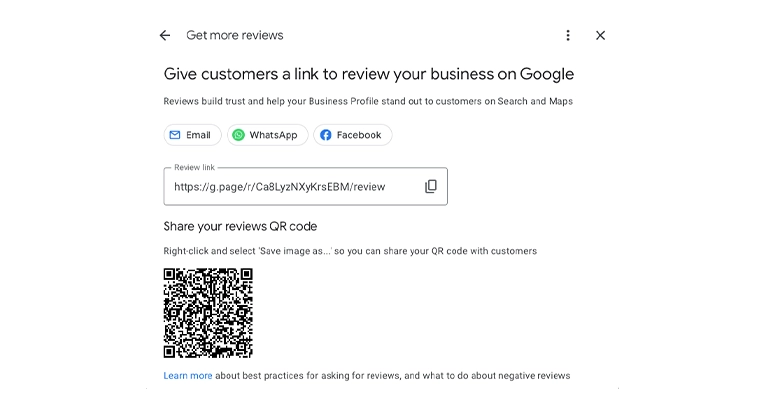
3. Create Localized Content That Answers Local Search Queries
To increase your visibility in local search results, develop a content strategy that focuses on local content. This creates resources that meet the needs of people in your specific area.
Local content examples like,
- Blog posts about local events, news and community updates.
- Guides titled be like “Best [Industry] Services in [City] in 2025.”
- Interviews or features on local customers and partners.
- Announcements about sponsored local activities.
Such content improves your local SEO ranking by signaling relevance and boosting engagement with your local audience.
4. Build and Manage Local Citations
A local citation is any online mention of your business’s name, address and phone number (NAP). These citations help validate your business for search engines and can influence your local search rankings.
Steps to build strong local citations,
- Get listed in major local directories like Yelp, Yellow Pages, Bing Places and Apple Maps.
- Ensure NAP details must match exactly in all citations.
- Submit your business to industry specific and city specific directories.
- Audit existing listings to correct errors or duplicates.
Having consistent, accurate local citations is a foundational ranking factor in local SEO.
5. Strengthen Your Local Link Building Profile
Local links are backlinks from other local websites, such as news outlets, blogs, event pages or organizations. These are a must for building authority in your specific region and share trustworthiness to search engines.
How to build local links,
- Sponsor or partner with local events and charities (try to add a backlink).
- Collaborate with local bloggers and influencers for features or guest posts.
- Submit press releases to local news sites.
- Join your local Chamber of Commerce or business groups with directory listings.
Improving your local link profile is one of the most effective ways to boost your local SEO beyond on-page optimization.
6. Optimize Your Website for Local Intent
Your website is at the center for your local SEO campaign and it must be built with local intent in mind. Every page should signal to Google that your business is relevant to a specific local market.
Here’s how to optimize your website for local,
- Use local keywords in title tags, meta descriptions, headers and URLs.
- Add your business location clearly to your homepage and footer.
- Add a Google Map with your exact location.
- Create unique landing pages for each city, neighborhood or service area you serve.
- Add local business schema markup to help search engines understand your geographic focus.
Google prioritizes websites for local searches that provide users faster, relevant and geo-targeted information. Structured content around local relevance improves both user experience and search ranking.
7. Use Local SEO Tools for Insights & Automation
Modern local SEO tools can help automate, track and improve your entire strategy. Some useful tools like,
- BrightLocal, for citation tracking, audit reports and review monitoring.
- Moz Local, for managing listings in directories.
- Whitespark, for citation building and local rank tracking.
- Google My Business, to monitor performance in local search results.
Using the right tools gives you the data to understand what’s working and what’s not, critical for making progress in your SEO efforts.
Keep Your SEO Practices Updated
SEO is not set and forget type work. To rank higher in local search, you need to,
- Revisit your keywords as local searches.
- Update your content to show new local events, services or customer needs.
- Monitor changes in local SEO ranking factors to stay ahead in competition.
When done right, these practices help your local business not only grow its traffic but also grow in the local community too.
Advanced SEO Practices, Search Trends & Measuring Local SEO Performance
Once the foundation of your local SEO campaign is set, complete local citations, keywords and content. The next step is refining your approach using technical SEO, search behaviors and using data to track customers. In 2025, the businesses that get successful in local search rankings are those that apply each and every tips & tricks as needed.
1. Technical SEO for Local Websites
Optimizing your website for local performance starts with your technical infrastructure being solid. Local SEO isn’t just about what users see, it’s about what search engines understand.
Here’s how to apply technical SEO to your website for local searches,
Mobile Optimization: In 2025, mobile first indexing is default. Make sure your site loads fast, uses responsive design and provides easy navigation for mobile users.
Page Speed: Use tools like Google PageSpeed Insights to optimize load times.
Structured Data: Add schema for local business, reviews, products, events and FAQs to boost reach in local search results.
Secure & Crawlable: Use HTTPS and ensure search engines crawl and index all key pages.
Internal Linking: Link between service pages and local content to strengthen relevance and user flow.
When search engines detect a clean, fast and secure structure, your local business is more likely to appear in the local pack and rank higher organically.
2. Prepare for Voice Search and AI-Based Local Queries
Search behavior has changed. People no longer just type “pizza near me” they say, “Where can I get a good pizza delivered right now?” Voice search and AI generated results have created new patterns in local searches.
To optimize for this,
- Use natural, conversational phrases in your content (think FAQs).
- Target longer tail keywords that share how people talk.
- Structure content to provide quick answers Google can extract in featured snippets or voice results.
As AI search tools come, understanding intent and context is now just as important as targeting keywords.
3. Improve Local SEO Through UX and On-Page Elements
To help users and search engines, you need seo practices that improves both usability and rankings.
Checklist for local on-page optimization,
- Add location based H1s and H2s (e.g. “Top Dental Clinic in [City]”)
- Place NAP details on every page, ideally in the footer
- Use clickable phone numbers and map
- Add local reviews and testimonials with geo specific details
- Show trust badges and certifications relevant to your local market
These elements support your seo aims while boosting trust and conversions, two key parts of effective local SEO.
4. Track and Measure Your Local SEO Results
Measuring success is important to improving your SEO efforts. Here’s how to monitor and analyze your performance. Key Metrics to Track:
Local Pack Rankings: Use tools like BrightLocal to monitor the top 3 local pack positions.
Google Business Profile Insights: Review clicks, calls, direction requests and photo views.
Traffic by City/Region: Use Google Analytics to break down visits by location.
Citation Score & Consistency: Ensure your listings remain accurate in all local directories.
Review Growth: Track how many new local reviews you receive monthly and your average rating.
Keyword Rankings: Monitor how your local keywords perform in different zip codes or neighborhoods.
The goal is not just to rank higher, but to attract local customers who are ready to take action.
5. Common Faults in Local SEO (And How to Avoid Them)
Even the most detailed local SEO guide can’t save a campaign from small, overlooked mistakes. Avoid these errors,
- Inconsistent NAPs across platforms
- Duplicate listings in major directories
- Failing to update your content with current local events
- Ignoring local reviews
- Missing schema markup or structured data
If you want to dominate local search, you must treat your SEO as a living system. Because you need to update and improve over time.
6. Automation Without Losing Authenticity
There are plenty of local SEO tools that make your workflow easy, listing distribution & review management. However, always add a human touch:
- Customize your review replies
- Localize content with real community insight
- Real customers and local news that matters to your audience
Authenticity builds trust and trust brings engagement, this is a growing ranking factor for local search engine algorithms in 2025.
Conclusion
Local SEO means building trust and visibility within your community. With the right strategy, tools and content, your business can dominate local search results and connect with the customers who matter most.
FAQs
What is local SEO and how does it help small businesses?
Local SEO is a strategy focused on improving local searches. It helps small businesses show up on the first page of local search, connect with nearby customers and compete more in their local market.
How can I improve my visibility in local search results?
You can rank higher in local search by using relevant local keywords, accurate NAP citations, collecting reviews, optimizing for mobile, using schema and building content around local intent. Use local SEO tools to monitor progress.
Why is creating local content so important?
Local content helps local relevance to both users and search engines. Topics like local events, customer stories or regional services help you to connect with your local audience and improve local rankings.
Do I need different strategies for different locations?
Yes. For businesses serving multiple areas, content and keywords per region. Create a website for local searches in each service zone and personalize messaging for local dialects, issues or culture. This improves local search presence and engagement.
How long does it take to see results from local SEO?
With consistent work, many see ranking improvements within 2-3 months. Competitive local SEO targets (like dominating your local pack) may take 6+ months. Staying active with seo practices, content updates and reviews ensures continued progress.
Alif Meherab is a digital strategist and front-end developer specializing in netnographic communications, brand positioning, and neuromarketing tactics. With expertise in UI design, digital marketing strategy, and promotional storytelling, Alif helps brands connect with audiences through impactful copy, engaging visuals, and retention-driven social media campaigns.
- Alif Meherab
- Alif Meherab
- Alif Meherab



